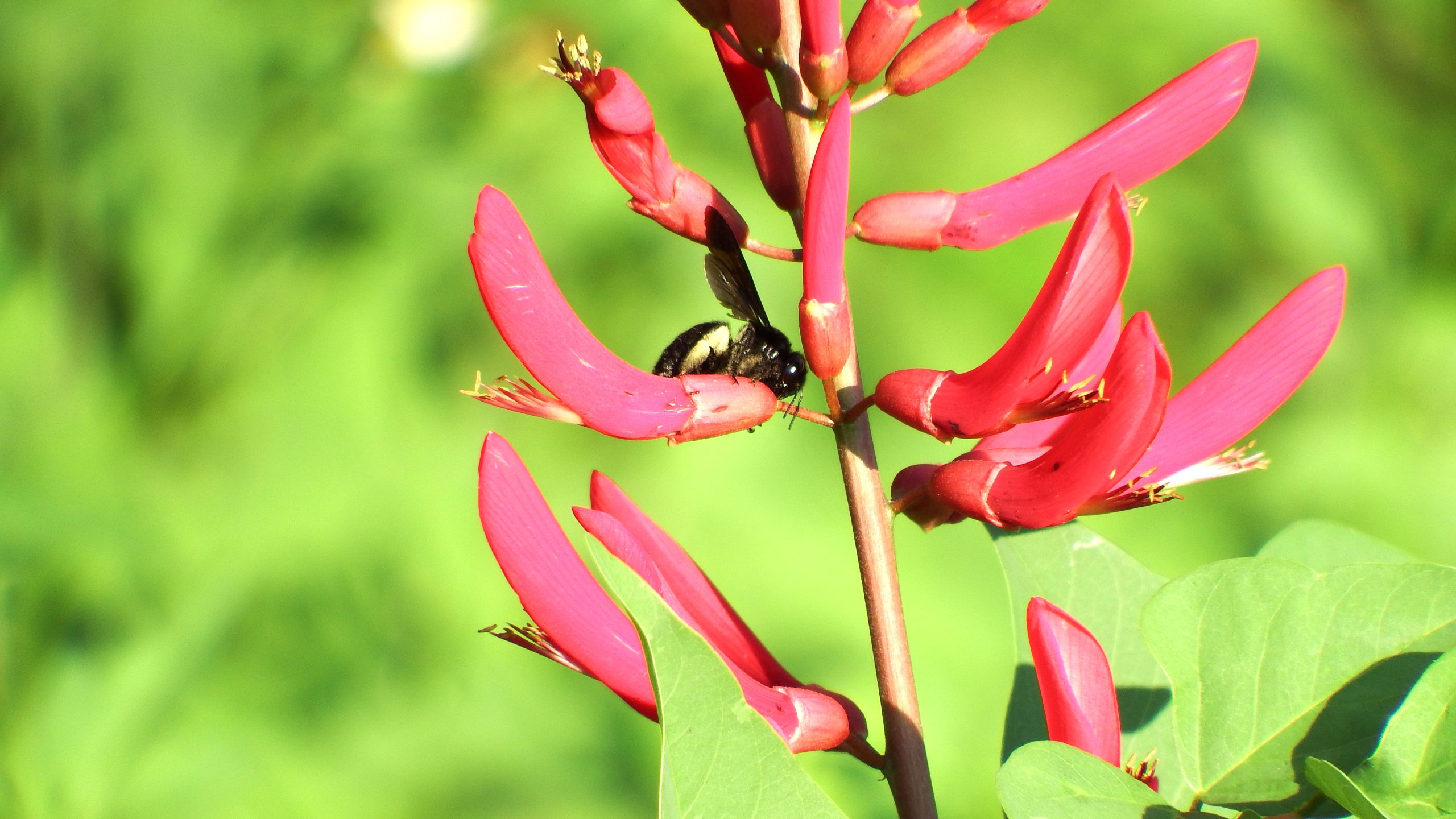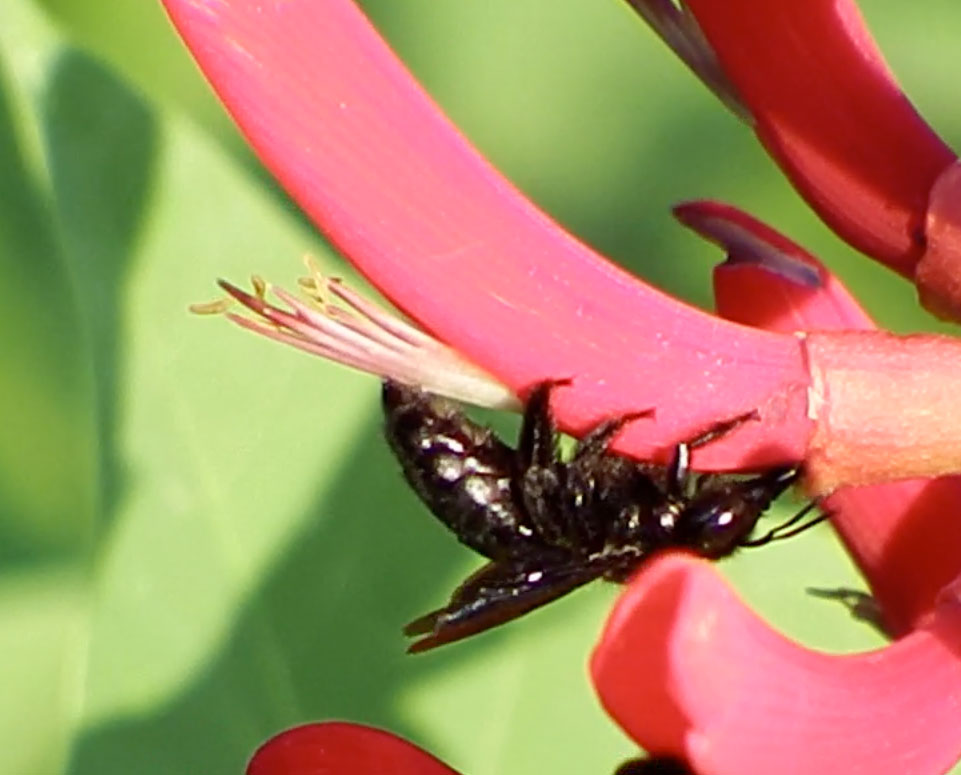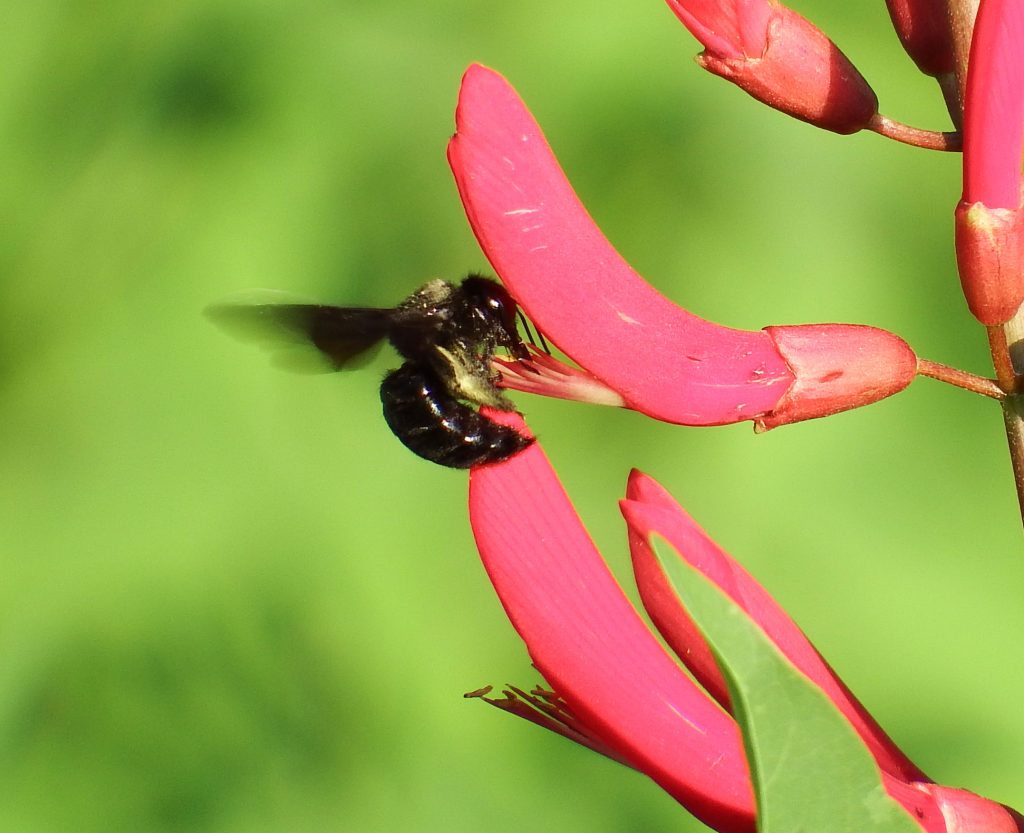Cherokee bean v. carpenter bee

This post was supposed to be about the Cherokee bean plant blooming on the path south of the greentree trail. I took tons of photos of bees feeding on the plant. I even saw a hummer visit but was too slow with the camera to share it with you. I researched all about this pollinator wonder plant including the fact that the seeds are rather poisonous. Since I was once in possession of a dog who poisoned himself repeatedly, I am very attuned to what not to put in my yard. The seeds are very attractive. Red. In Mexico and parts of Central America the seeds are used as rat poison. So, great in the Park, take care if you plant it in your yard. BTW, the dog died at 16 and not from poisoning.
In addition to focusing on the lovely flowers, I was going to talk about nectar robbing, of which there was a lot going on.

This bee is nectar robbing. You can see the mouth extended and jammed right into the base of the bloom. That’s where the nectar is. Bees will usually nectar rob upside-down because gravity pools the nectar on the bottom of the flower.
For the most part, bees live on nectar and almost accidentally collect pollen in the process. When the pollen has built up on their bodies, they groom themselves, shoving all the pollen into structures that store the protein-rich food. For carpenter bees, that structure is on their hind legs.
Nectar robbing is when a bee doesn’t access nectar from the inside of the plant (which would necessitate interacting with the pollen-bearing structures), they instead access nectar by drilling a hole from the outside and slurping. Since they don’t “pay” for the nectar by offering and taking pollen, this is “robbing.”
Don’t judge them. Carpenter bees are big, and that nectar is down at the end of a long tube they can’t fit in. And even though bees have long tongues to overcome deep nectar, carpenter bees have unusually short mandibles and the tongue is part of that whole mouth structure. Their mandibles are perfectly formed for chewing half-inch wide perfect circles in wood. They chew through the wood to create a nest for their offspring. The holes are relatively shallow and not considered destructive to structures.

This bee has her mouth extended looking for nectar. It isn’t there. But she is getting a lot of pollen on her. All the yellow parts are pollen. Notice that hind leg. It looks like a yellow stripe, but that’s all pollen. She has special pollen-collecting hairs on her hind legs where she stores the pollen she will use to make food for her larva.
Those topics would make for a really great blog post. But I had a lot of video of carpenter bees collecting pollen and nectar robbing. I wanted to get a look at an extended tongue, so I stepped through the video frame by frame. Never saw a tongue, but OMG, those antennae. They are so expressive. They give you a real window into what the bee is thinking and doing. That’s because a bee uses them to gather almost all of its sensory information except vision. A bee uses its antennae to hear, smell, orient, gather tactile information and measure speed in flight. It’s as if the entire rest of the bee is a device to move those antennae from place to place!
In this ultra slow motion video you can watch our bee explore the pollen-containing structures of the Cherokee bean flower. She touches them gently over and over, ultimately rejecting the flower. I have read that bees can tell by scent whether a flower has been recently visited, making it less desirable because the nectar might have already been eaten. I’ve also read that pollen grains can contain variable amounts of protein and bees can get picky when they are gathering pollen to feed their soon-to-be-laid eggs.
For both of these videos (but especially the first one), you will see more if you use the square with a diamond in it box in the lower right corner of the video to expand it to full screen. Escape will return you to normal size.
She is using her antenna to assess the situation and for whatever reason, she finds this flower lacking.
This is a longer video at full speed that follows a bee as she gathers pollen, nectar robs and generally checks things out.

